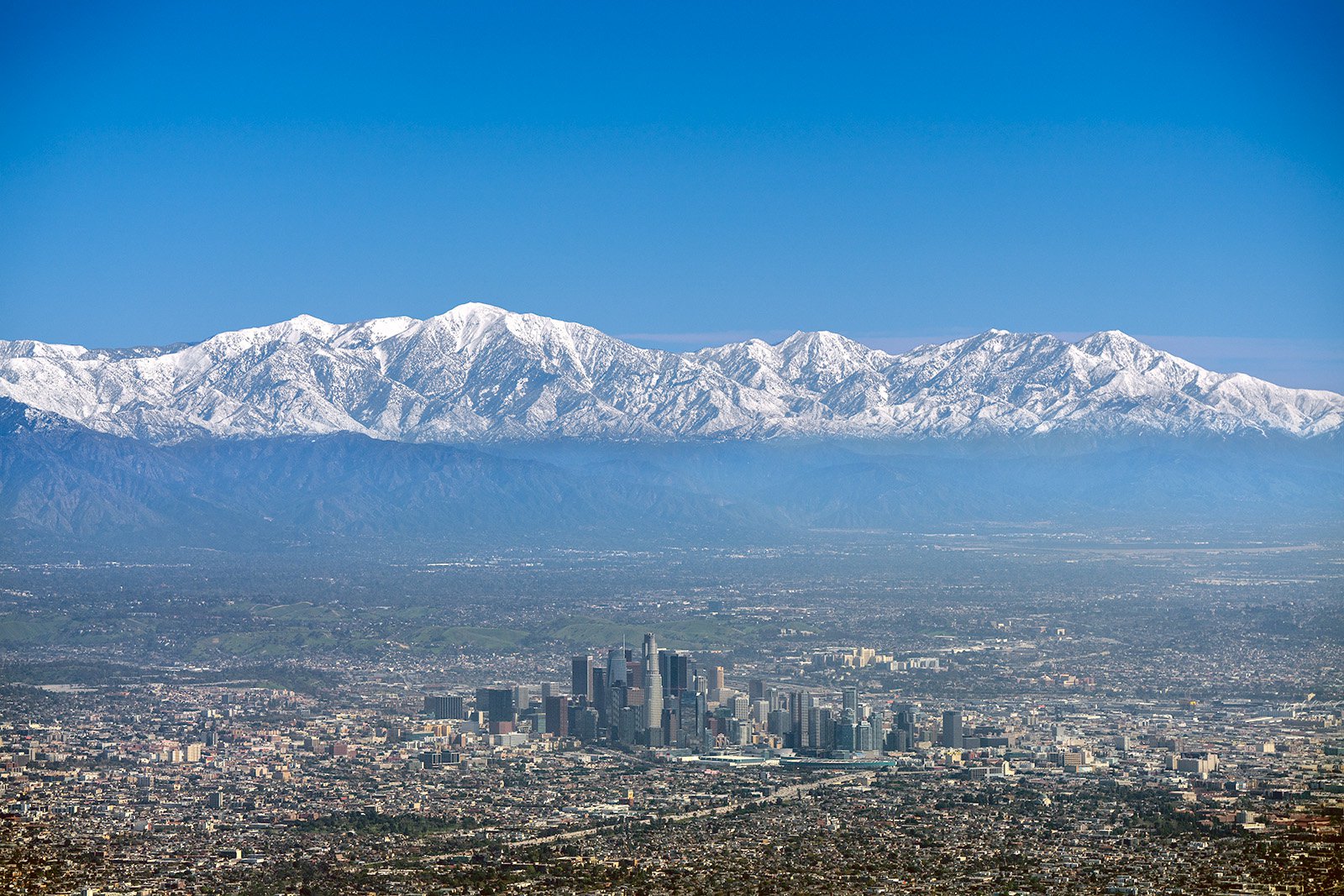
The winter of 2022-2023 was an unusual one, to say the least. With constant rainfall and temperatures dipping as low as 30 degrees Fahrenheit around Los Angeles, the polar conditions were an extreme contrast to the usually sunny and warm weather of Southern California. Even seasoned Californians were caught off-guard, as there hasn't been a weather event like this in living memory. Aside from the extreme cold, wet conditions, the unusual weather pattern created some breathtaking landscapes that were captured in aerial photographs.

Aerial view of Big Bear Lake, California, with boat docks blanketed in fresh snow, illustrating the unusually wet and cold winter.
From Drought to Floods
For the past several years, California has been experiencing dry, arid weather, with wildfires, drought, and extreme heat becoming the new norm. The drought conditions were marked by an alarming depletion of reservoirs and an increase in wildfires. With record heatwaves exacerbating the already arid conditions, the state faced a severe water crisis, compelling authorities to impose strict water usage restrictions. The parched landscape also fueled numerous wildfires, leading to destruction of habitats, loss of life, and extensive property damage.
The winter of 2022-2023, however, has proven to be quite change. It was characterized by several large-scale weather patterns that generated historical levels of precipitation and cold temperatures. The primary cause was the persistent jet-stream over the Pacific Ocean, which ushered in a succession of atmospheric rivers, creating powerful storms across the state. These systems produced periods of heavy rainfall, thunderstorms, snow, and freezing temperatures.

Aerial image of Big Bear Lake in California frozen over during an uncharacteristically cold and wet winter, its snowy, icy surface appearing like an abstract painting
A Winter Wonderland
The aerial views of California during the winter of 2022-2023 were nothing short of mesmerizing. The unusual cold and wet weather transfigured the normally arid landscapes into a spectacle of natural beauty. Verdant green replaced the typical brown hues of California's hills, a result of the abundant rainfall that replenished the thirsty landscapes. Higher elevations were completely transformed into winter wonderlands, with snow-capped peaks and frosted trees standing resplendently against the winter sky.

An aerial photograph of downtown Los Angeles, its characteristic urban skyline juxtaposed against the backdrop of snow-capped mountains
Downtown Los Angeles
The local mountains around Downtown Los Angeles underwent an extraordinary transformation. The usually bare peaks were blanketed with a thick layer of snow. This was a result of the snowline descending significantly lower than it usually does, bringing a new dimension to the city's skyline. From all around the city, onlookers were captivated by the contrast of the snow-capped mountains against the skyscrapers of DTLA's urban backdrop. Despite the initial shock of such a visual shift, the snow-covered mountains provided a tangible reminder of nature's unpredictability and the ever-changing beauty of Los Angeles.

An aerial view of Big Bear Lake, California covered in a thick sheet of snow, reflecting the intensity of an unusually wet and cold season.
Big Bear
Unusually heavy snowfall blanketed the Big Bear, California, transforming the rugged landscape into a serene, white wonderland. Big Bear Lake, a popular destination known for its crystal clear waters, experienced a phenomenon that few locals have witnessed before: the lake almost entirely froze over. The heavy snow disrupted daily life, roadways were often impassable, and regular activities ground to a halt, as many residents were unable to leave their homes due to the sheer amount of snow that blanketed the mountain.

The Sierra Nevada Mountains in California with their snowy peaks peeking through a layer of clouds
Sierra Nevada Mountains
The winter of 2022 brought an unusual cold and rain to the Sierra Nevada Mountains, dramatically altering its typical landscape. The usually sparse snowpack was significantly higher, resulting in an enchanting white landscape that stretched as far as the eye could see. However, this extraordinary snowfall also heightened the risk of flooding in the region, as sudden warming could cause rapid melting and overflow of mountain streams. Despite these challenges, the unusually wet winter also had a silver lining: it provided much-needed relief to the prolonged drought in the region. The voluminous snow and rain replenished reservoirs, rehydrated the soil, and sustained rivers and streams, providing a much-needed boost to the local ecosystems.
The winter of 2022-2023 in California was an exceptional season characterized by extreme precipitation and cold temperatures. This rare weather phenomenon created awe-inspiring landscapes that few Californians have ever seen. These views demonstrated the delicate balance between humans, animals, and the natural environment, which makes California a unique area to live in. Despite the destruction caused by winter storms, Californians had a chance to witness and admire the beauty of the state’s natural wonders.